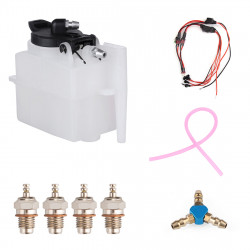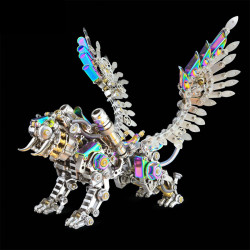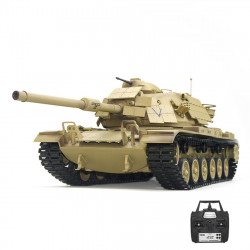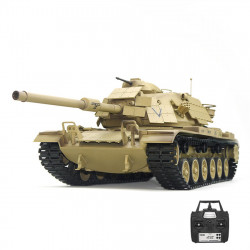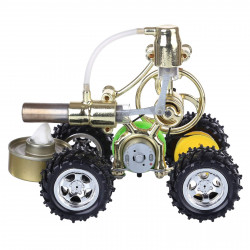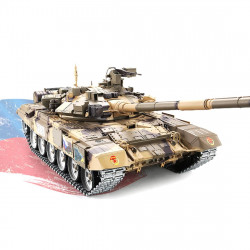
Everything You Need to Know about Traction Engine
Farm tools were powered by portable engines from the beginning of the 19th century. These were mobile steam engines that were capable of powering agricultural equipment. The general public in America needs to understand the importance of farm tractors. It’s unlike anything else you’ll find.Steam engines are used in steam tractors to pull objects. In the early 20th century, steam tractors were widely used as agricultural tractors in North America. Most miniature traction engine versions, often weighing less than 7 tons, that move light loads are referred to as vintage steam tractors in Great Britain. They are roads even though they are referred to as light steam tractors. They are only scaled-down models of tractors that run on steam.
The Invention Of Tractors
Early in the 19th century, mechanical farm equipment with flexible belts was powered by steam engines on wheels, leading to the invention of the first tractor. When the first portable steam engine for agricultural purposes was created in 1812, it was called the Barn Engine—the Barn Engine powered corn threshing machines.
Throughout tractor history, advancements and engine upgrades have been made. A two-cylinder gasoline engine was successfully created in 1903 by Charles W. Hart and Charles H. Parr. For their business, they constructed fifteen farm tractors. The nation’s oldest surviving internal combustion engine tractor, weighing 14,000 pounds, is on display at the Smithsonian National Museum of American History in Washington, D.C.
More than 100 companies manufactured farm tractors between 1916 and 1922. By enabling the simultaneous planting and cultivation of three rows of crops, they introduced the first General Purpose Tractor in 1928, boosting output.
Farmers were wary about rubber wheels since they could only perform as much work as steel wheels used on agricultural tractors at the end of the 1930s. However, the Model “B” tractor with rubber tires, electric starter, and lights wasn’t introduced until 1939.
Origin And History:
In 1812, Trevithick constructed a portable steam traction engine, which served as the model for the traction engine. The updated variant was roughly twice as efficient as his earlier models. It was a variation of his high-pressure engine, which fused boilers and engines and vented exhaust to the chimney to create draughts on the fire.
Since then, portable engines have been manufactured in every industrial nation in the world. Where the most heat was produced, engines were typically installed atop horizontal locomotive-style boilers with cylinders positioned over the firebox.
As the usage of portable engines increased in the 1840s, many inventors started to wonder why horses should pull a possible primary mover.
Trevithick created his self-moving engine in 1801, using connecting rods and cranks between the wheel and crosshead of his Puffing Devil locomotive-cum-carriage. Trevithick’s application has nothing to do with the recent effort to incorporate portable steam engines into mobile devices.
Instead, the crankshaft’s rotation was transferred to the wheels by pitch chains and sprockets. This led to the invention of the steam traction engine, a device that operated without significant improvement for almost a century. The majority of the early technological advances occurred in Britain.
The traction engine period began in 1842 when Ransomes and Simms displayed a self-propelled threshing machine at the Royal Show in Bristol. This machine was equipped with a vertical boiler, an engine, and a horse-drawn forecarry.
During this intense phase of experimentation, numerous engines were produced. Chain drive has been used in portable engines in various methods throughout history. Nonetheless, the first chain drive to be applied to a portable engine was given to Thomas Aveling of Rochester. A year later, he created a traction engine that had one cylinder placed above the firebox.
In 1862, Aveling installed a big flywheel behind the chimney so that the crankshaft would be over the firebox and the cylinder would be connected to the front of the boiler. This reconfiguration became the norm to streamline the drive.
Steam Era: The Golden Era
By the end of the 19th century, metropolitan America had grown due to the Industrial Revolution. The panorama of agriculture was another story. Family members mainly operated these livestock-powered small-acre farms and hired men.
During the heyday of steam-powered tractors and farm equipment, internal combustion engines were not yet developed. At his plant in California, Daniel Best began producing steam engines in 1889. They ranged in power from 30 horsepower to the enormous 110 horsepower.
The 1790s saw the development of agricultural steam power in Britain, which was later followed by cable-operated cultivation equipment, traction engines, portable engines, and steam traction engine kits.
The most common method of substituting motor power for horses throughout the 1890s was using steam engines, significantly increasing agricultural output.
Use And Application:
1. Broiler:
Boilers that burned coal or wood and were fed by the back firebox fueled engines and tractors. Water is heated in a reservoir above the firebox, and the flywheel and tractor are powered by the steam pressure produced by the firebox.
2. Harvesting in less time:
A pulley band was attached to the tractor’s flywheel and extended to the thresher’s flywheel to power the machine fifty feet away. This was advantageous when harsh weather was approaching since it allowed the farmer to harvest and thresh wheat from his fields in a matter of days instead of weeks.
3. Less workforce:
A sizable workforce was needed for the harvest, even with reduced work hours. At least one person was required to keep an eye on and fuel the steam engine, and two more were needed to keep an eye on the pulleys.
4. Water supply:
Horses and drivers created constant circuits between a water source and the steam engine to supply a consistent water flow. Another team had to pull a coal or wood wagon to keep the fire running. Many more were needed to harvest the wheat and move it to the thresher. Because these traction engines were expensive and required a lot of workers to maintain, many farmers contracted with an outside company to handle the services needed to run them.
5. Affordable:
Most farmers organized into cooperatives, with one farmer housing and training the tractor while the other provided the tools, horses, and labor to finish the harvest. The cooperative crew threshed the crops grown by the farmers on their farms. The cost dropped to a level the typical farmer could afford, even without building their steam engine tractor. Additionally, steam tractors for sale cost less.
Some Other Applications Of Traction Engines:
The primary functions of traction engines were as follows:
Plowing:
On farms, tractors were used everywhere to power threshing machines with steam and chaff dust, as well as in various local trades, including hauling timber and removing household items.
The steel wire rope-pulled transport engine was a significant advancement, which moved a multi-furrow plow from field to field. Additionally, traction engines occasionally had a plow directly attached. Additionally, 20-ton plowing engines with substantially broader wheels made it easier to plow soft ground.
Road Locomotives:
A dynamo powered these amazing creatures, decorated with bright canopies and used by traveling showmen to transport massive fairground rides and supply energy. No question had the right of way on the roadways because it was common for the engine to tow seven or eight trailers.
On The Road:
These engines had three gears, larger wheels for higher speeds, a larger water-carrying capacity for longer distances, and occasionally a secret motion to keep horses from being scared.
The Steam Traction Engine As Working Models
Given their lengthy history and significant place in the hearts of both children and farm enthusiasts, it is no surprise that there are innumerable working models and toy representations of steam traction engines.
There is a particular space for steam traction engine kits and working model steam-powered tractors constructed from scratch. However, we’ve compiled some evaluations and advice to assist you, so continue reading!
The Steam Car Model:
Product Description: This item, A steam car, is the inspiration for the Steam Car Full Metal Model. You will receive a steam vehicle engine kit and a metal box with your purchase. As a result, people will need to put the pieces and components together. Professional assembly and assembly line assembly are comparable. It has a wealth of fascinating facts and experiences.
History: It started in 1928 when the French used a Quar steam car. The internal combustion engine car and the steam car were already in competition at this point. Internal combustion engines are expected to play a significant role in transportation in the future. However, many innovations seen in steam cars are still utilized in modern cars, including differentials, independent suspensions, front-drive engines, and chain-drive transmissions.
Features of Steam Car Model:
Materials & Quality: A superb translation of human wisdom in a time when large industries produce and crave, this piece is made of metal, CNC and precise casting, aluminum alloy oxidation coloring, artisan quality, and 272 pieces polished with professional grinding equipment.
Mechanism: The transmission process is immediately visible, and the mechanics are described in an obvious manner. Additionally, the mechanical mechanism’s strength and rationality are evident. The logic and robustness of the system exhibit a great deal of mechanical beauty, and the entire procedure is readily apparent. It provides an intuitive explanation of the fundamental principles of machine operation and the essential value of a machine based on historical classics. The product design is as closely recreated and rebuilt as feasible to historical industrial science and technology nodes.
Assembly Kit: Depending on its structure and function, each product can be upgraded, combined, and modified into a power system using a specific kit or do-it-yourself modification. The original product requires an enjoyable construction process. The entire procedure is comparable to a professional facility’s assembly line. It has 272 pieces and takes around four hours to assemble. You will better understand the car’s operation as you put it together. and the degree of difficulty is high, which is intriguing and enlightening. To boost your confidence, push yourself and demonstrate your abilities between trials.
Battery: The lithium battery can run for up to 30 minutes at full power and two hours at its lowest charge. DC 5 volts is the output voltage of the lithium battery.
A great gift idea: With its affordable pricing and excellent packaging, it’s the perfect present for every occasion for your friend, child, coworker, or relative. They will adore it, and it will be a big hit with them.
The recommended age: People who are at least ten years old can use this item. We hope this post has given you all the information you require regarding the steam car model.
